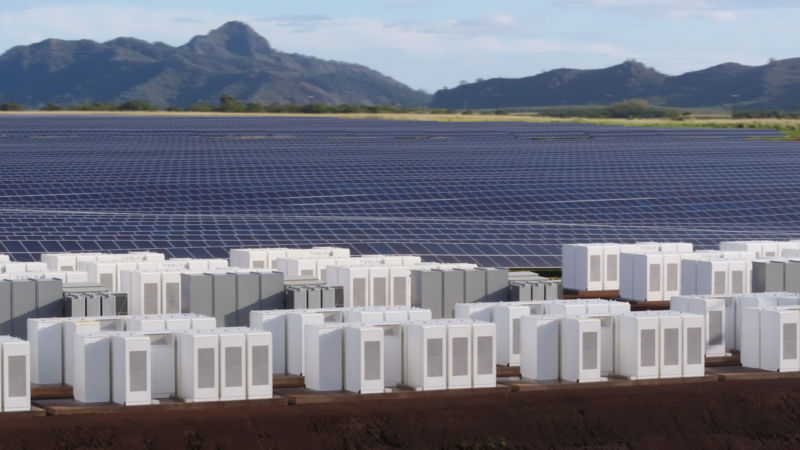Kauai is moving from diesel generators to renewable energy with help from Tesla
Ars Technica » Scientific Method 2017-03-12

Enlarge / These are second-generation Tesla Powerpacks. (credit: Tesla)
On Wednesday, Tesla and the electricity cooperative that serves the Hawaiian island of Kauai opened a 13 MW solar farm combined with a 52 MWh battery installation to help the island reduce its fossil fuel consumption by about 1.6 million gallons of diesel and petroleum per year.
The batteries are intended to store Kauai’s abundant solar energy resources during the day and dispatch them when necessary, often at night. Solar City, the solar panel company that Tesla bought last year, built a similar installation on the island of Ta’u in American Samoa. That system serves 600 people. In California, several battery-making companies, including Tesla and AES Energy Storage, have built battery storage for that state’s grid, too. (Although in California’s case, while the batteries allow for more renewables to be added to the grid, the batteries aren’t necessarily tied to renewable energy, so all kinds of electricity is stored equally for dispatch during periods of electricity shortage).
Hawaii specifically represents unique potential for proponents of renewable energy. The eight main islands that make up the state have relied heavily on petroleum generators for most of their electric needs. That’s a problem because Hawaii doesn’t produce any petroleum, natural gas, or coal, so all fossil fuel supply must be shipped to the islands and stored. None of the islands’ grids are connected by undersea cables, either, so electricity production either happens on that island or it doesn’t happen at all. If petroleum shipments are interrupted, the islands are vulnerable to outages.